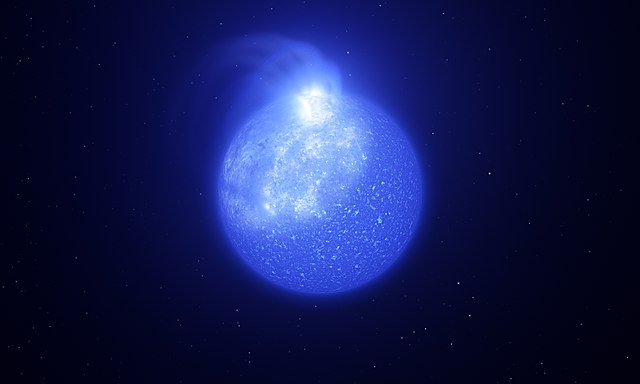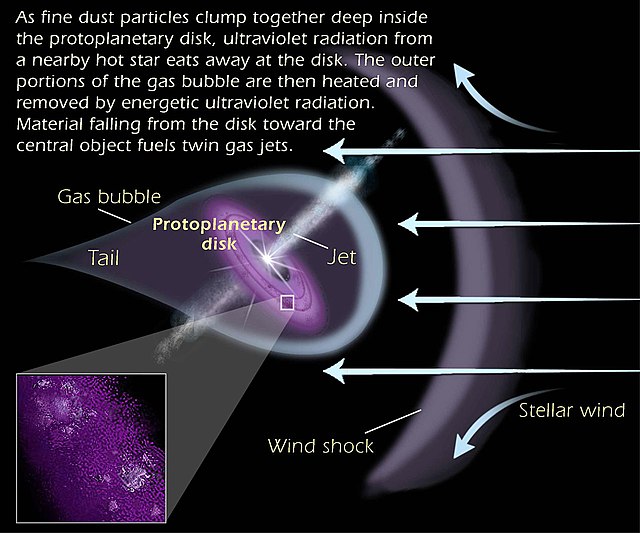A B-type subdwarf (sdB) is a kind of subdwarf star with spectral type B. They differ from the typical subdwarf by being much hotter and brighter. They are situated at the "extreme horizontal branch" of the Hertzsprung–Russell diagram. Masses of these stars are around 0.5 solar masses, and they contain only about 1% hydrogen, with the rest being helium. Their radius is from 0.15 to 0.25 solar radii, and their surface temperature is from 20,000 to 40,000 K.
Artist's impression of a sdB star, showing a giant hot spot
Stellar evolution is the process by which a star changes over the course of time. Depending on the mass of the star, its lifetime can range from a few million years for the most massive to trillions of years for the least massive, which is considerably longer than the current age of the universe. The table shows the lifetimes of stars as a function of their masses. All stars are formed from collapsing clouds of gas and dust, often called nebulae or molecular clouds. Over the course of millions of years, these protostars settle down into a state of equilibrium, becoming what is known as a main-sequence star.
The change in size with time of a Sun-like star
Artist's depiction of the life cycle of a Sun-like star, starting as a main-sequence star at lower left then expanding through the subgiant and giant phases, until its outer envelope is expelled to form a planetary nebula at upper right
Chart of stellar evolution
Illustration of the dynamics of a proplyd





